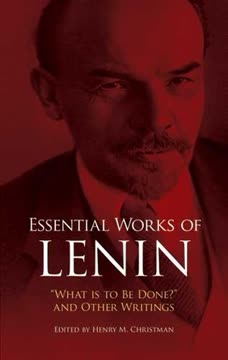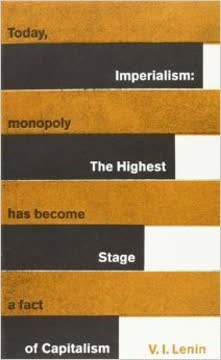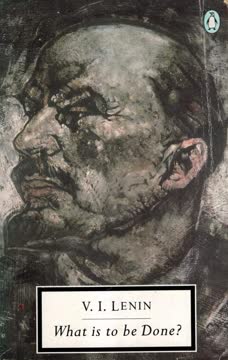Key Takeaways
1. Capitalism's Core: Competition to Monopoly
The transformation of competition into monopoly is one of the most important—if not the most important—phenomena of modern capitalist economy.
From free markets to monopolies. Capitalism, initially characterized by free competition, inevitably evolves towards concentration of production and capital. This process leads to the emergence of monopolies, where a few powerful entities control entire industries. This shift is not a deviation but a natural progression within capitalism.
Concentration of power. The data shows that a tiny fraction of enterprises control a vast majority of production. For example, in Germany, less than 1% of enterprises use over 75% of the steam and electric power. Similarly, in the US, a small number of large-scale enterprises account for nearly half of the total production. This concentration of power in the hands of a few is a defining feature of modern capitalism.
Combines and cartels. Monopolies often take the form of combines, which integrate different stages of production, and cartels, which are agreements between companies to control prices and markets. These structures further solidify the power of monopolies and reduce competition. This is not a temporary phase but a fundamental shift in the nature of capitalism.
2. Banks: From Intermediaries to Power Brokers
Every bank is a Stock Exchange—and the bigger the bank, and the more successful the concentration of banking is, the truer does this modern proverb become.
Banks as central players. Banks, initially serving as intermediaries for payments, transform into powerful monopolies controlling vast sums of money capital. They become the central hubs of the capitalist system, directing the flow of funds and influencing the fate of industries.
Concentration in banking. The banking sector undergoes a similar process of concentration, with a few large banks dominating the financial landscape. In Germany, for example, a handful of banks control the majority of deposits and capital. This concentration of financial power further strengthens the position of the financial oligarchy.
Interlocking networks. Big banks create complex networks of affiliated institutions, using holding companies and share ownership to control a vast array of enterprises. This system allows them to exert influence far beyond their own direct operations, creating a web of financial dependence.
3. Finance Capital: The Merger of Money and Industry
So finance capital is capital controlled by the banks and employed by the industrialists.
Finance capital defined. Finance capital is the fusion of bank capital with industrial capital. It represents a new stage of capitalism where banks no longer act as mere intermediaries but become active participants in industrial production. This merger creates a powerful financial oligarchy.
Control and influence. Through finance capital, a small group of financiers gains control over vast sectors of the economy. They use their financial power to influence industrial enterprises, often through interlocking directorates and share ownership. This control extends to all aspects of production and distribution.
The rise of the rentier. Finance capital leads to the growth of a rentier class, individuals who live off the income from their investments without engaging in productive labor. This class of bondholders and coupon clippers becomes a defining feature of the parasitic nature of imperialism.
4. Imperialism: The Export of Capital and Global Division
Imperialism is capitalism in that stage of development in which the domination of monopolies and finance capital has established itself; in which the export of capital has acquired pronounced importance; in which the division of the world among the international trusts has begun; in which the partition of all the territories of the globe among the great capitalist powers has been completed.
Beyond commodity exports. Imperialism is characterized by the export of capital, not just goods. Advanced capitalist countries, having accumulated vast amounts of surplus capital, seek profitable investment opportunities in less developed regions. This export of capital becomes a driving force behind global expansion.
Uneven development. The export of capital accelerates the development of capitalism in recipient countries, but it also intensifies the unevenness of global development. While some countries become centers of finance and industry, others are relegated to the role of suppliers of raw materials and cheap labor.
Colonialism and control. The export of capital is often accompanied by colonial expansion, as imperialist powers seek to secure access to resources and markets. This leads to the division of the world into a handful of dominant powers and a vast number of dependent territories.
5. Monopolies: Dividing the World Among Themselves
The world oil market is even today divided in the main between two great financial groups—Rockefeller’s Standard Oil Co., and the controlling interests of the Russian oilfields in Baku, Rothschild and Nobel.
International cartels. Monopolies extend their reach beyond national borders, forming international cartels and trusts. These agreements divide markets, fix prices, and control production on a global scale. This represents a new level of concentration and control in the world economy.
Examples of global division. The electrical industry, for example, is dominated by two major trusts that have divided the world between them. Similarly, the oil industry is controlled by a few powerful groups that compete for dominance. These examples illustrate the global reach of monopolies.
Temporary truces. While international cartels may appear to promote cooperation, they are ultimately temporary truces in the ongoing struggle for global dominance. The uneven development of capitalism inevitably leads to shifts in power and the re-division of markets.
6. Imperialism: A Parasitic and Decaying System
Finance capital does not want liberty, it wants domination.
Parasitism and decay. Imperialism is characterized by parasitism and decay. The rentier class, living off the income from investments, becomes increasingly detached from productive labor. This leads to a decline in the productive capacity of the imperialist countries.
Corruption and exploitation. The pursuit of monopoly profits leads to corruption and exploitation on a global scale. Imperialist powers use their political and military might to secure favorable terms for their investments and to suppress any resistance to their rule.
Internal contradictions. Imperialism intensifies the internal contradictions of capitalism, leading to increased inequality, social unrest, and the growth of opportunism within the working class movement. This creates a system that is both unstable and unsustainable.
7. The State: A Tool of Class Oppression, Not Harmony
The state is therefore by no means a power imposed on society from the outside; just as little is it ‘the reality of the moral idea,’ ‘the image and reality of reason,’ as Hegel asserts. Rather, it is a product of society at a certain stage of development; it is the admission that this society has become entangled in an insoluble contradiction with itself, that it is cleft into irreconcilable antagonisms, which it is powerless to dispel.
State as a product of class struggle. The state is not a neutral entity but a product of class antagonisms. It arises from the irreconcilability of class interests and serves as an instrument for the oppression of one class by another. This is a fundamental tenet of Marxism.
Special bodies of armed men. The state is characterized by the existence of special bodies of armed men, such as the army and police, which are separate from the general population. These bodies are used to enforce the will of the ruling class and maintain its dominance.
State as an instrument of exploitation. The modern state, even in its most democratic forms, is an instrument for the exploitation of wage labor by capital. It is a tool used by the ruling class to maintain its economic and political power.
8. Revolution: Smashing the State, Not Reforming It
The working class cannot simply lay hold of the ready-made state machinery, and wield it for its own purposes.
Rejection of reformism. The proletarian revolution cannot be achieved through gradual reforms within the existing state. The state machine, with its bureaucracy and military apparatus, must be smashed and replaced with a new form of organization.
Lessons from the Paris Commune. The Paris Commune demonstrated the need to dismantle the old state apparatus and create a new one based on the principles of proletarian democracy. This includes the abolition of the standing army, the election of all officials, and the reduction of their salaries to the level of workers' wages.
Revolutionary violence. The overthrow of the bourgeoisie and the destruction of the state machine cannot be achieved without violent revolution. This is a necessary step in the transition from capitalism to socialism.
9. Proletarian Dictatorship: A Necessary Transition
Between capitalist and communist society lies the period of the revolutionary transformation of the one into the other. There corresponds to this also a political transition period in which the state can be nothing but the revolutionary dictatorship of the proletariat.
Transition period. The transition from capitalism to communism requires a political transition period, during which the state can only be the revolutionary dictatorship of the proletariat. This is a necessary stage for suppressing the resistance of the bourgeoisie and organizing the new socialist society.
Democracy for the majority. The dictatorship of the proletariat is not a rejection of democracy but a means of achieving true democracy for the majority. It involves the suppression of the exploiting minority and the empowerment of the oppressed masses.
Withering away of the state. The dictatorship of the proletariat is a temporary measure that will eventually lead to the withering away of the state. As class antagonisms disappear, the need for a special apparatus of repression will also disappear.
10. Communism: The Withering Away of the State
In a higher phase of communist society after the enslaving subordination of individuals under division of labor, and therewith also the antithesis between mental and physical labor, has vanished; after labor has become not merely a means to live but has become itself the primary necessity of life; after the productive forces have also increased with the all-round development of the individual, and all the springs of co-operative wealth flow more abundantly—only then can the narrow horizon of bourgeois right be fully left behind and society inscribe on its banners: from each according to his ability, to each according to his needs!
Higher phase of communism. The higher phase of communism is characterized by the abolition of the division of labor, the disappearance of the antithesis between mental and physical labor, and the transformation of work into a primary necessity of life. This is a society of abundance and freedom.
Beyond bourgeois right. In the higher phase of communism, the principle of "bourgeois right," which distributes products according to the amount of work performed, is transcended. Society will operate on the principle of "from each according to his ability, to each according to his needs."
The end of the state. With the achievement of complete communism, the state will become entirely unnecessary and will wither away. This is because there will be no classes, no exploitation, and no need for a special apparatus of repression.
Last updated:
FAQ
What is Essential Works of Lenin: "What Is to Be Done?" and Other Writings by Vladimir Lenin about?
- Comprehensive Lenin anthology: The book collects four of Lenin’s most influential works, providing a broad overview of his theories on capitalism, imperialism, revolutionary organization, and the state.
- Theory and revolutionary practice: It explores Lenin’s analysis of capitalist development, the necessity of a disciplined revolutionary party, the nature of imperialism, and the transition to a communist society.
- Historical context: The anthology situates Lenin’s writings within the political struggles of late Tsarist Russia, highlighting his opposition to rival socialist factions and his leadership of the Bolshevik movement.
Why should I read Essential Works of Lenin by Vladimir Lenin?
- Foundational Marxist texts: The book contains essential readings for understanding Marxist theory, revolutionary strategy, and the historical development of socialism.
- Blueprint for revolution: Lenin’s works offer practical guidance on organizing for social change, critiquing reformism, and building a disciplined movement.
- Insight into 20th-century history: The writings illuminate the ideological and political roots of the Russian Revolution and the global impact of Leninist thought.
What are the key takeaways from Essential Works of Lenin by Vladimir Lenin?
- Role of the revolutionary party: Lenin emphasizes the need for a centralized, professional organization to lead the proletariat.
- Analysis of capitalism and imperialism: The book details how capitalism evolves into monopoly capitalism and imperialism, leading to global exploitation and conflict.
- Theory of the state and revolution: Lenin argues that the state is an instrument of class oppression, which must be smashed and replaced by a proletarian state that will eventually wither away.
What are the most important quotes from Essential Works of Lenin by Vladimir Lenin and what do they mean?
- “Imperialism is the highest stage of capitalism.” This means that capitalism inevitably leads to monopoly and global domination by a few powers.
- “The state is an organ of class rule, an organ for the oppression of one class by another.” Lenin underscores the state’s function as a tool for maintaining class dominance.
- “Without revolutionary theory there can be no revolutionary movement.” This highlights the necessity of clear, disciplined ideology for successful revolution.
How does Vladimir Lenin define imperialism in Essential Works of Lenin?
- Monopoly capitalism: Imperialism is described as capitalism’s stage of monopoly, where a few large enterprises dominate economic life.
- Fusion of finance and industry: Lenin identifies the merging of bank and industrial capital, forming a financial oligarchy.
- Global division and exploitation: Imperialism is marked by the export of capital, the division of the world among great powers, and the economic subjugation of less developed nations.
What is Lenin’s theory of the state and revolution in Essential Works of Lenin?
- State as class oppression: Lenin sees the state as a tool for maintaining the dominance of the ruling class through special bodies of armed men.
- Necessity of smashing the state: He argues that the proletariat must destroy the bourgeois state apparatus, not simply take it over.
- Dictatorship of the proletariat: A transitional proletarian state is necessary to suppress the bourgeoisie and reorganize society, eventually leading to the state’s “withering away.”
Why does Vladimir Lenin emphasize the need for a professional revolutionary organization in What Is to Be Done??
- Leadership over spontaneity: Lenin argues that spontaneous mass movements are insufficient; a disciplined, centralized party is essential for revolutionary success.
- Secrecy and specialization: He advocates for a core of professional revolutionaries, trained to withstand repression and guide the movement.
- Distinction from trade unions: Lenin differentiates between broad economic organizations and the secret, political work required for revolution.
How does Vladimir Lenin critique “Economism” and trade union politics in What Is to Be Done??
- Limits of trade unionism: Lenin criticizes those who focus solely on economic demands, arguing that this approach cannot challenge the autocracy.
- Political struggle is essential: He insists that Social-Democratic politics must address the broader fight against the state, not just employers.
- Need for political agitation: Lenin calls for exposing the regime’s abuses and mobilizing workers for revolutionary, not just reformist, goals.
What is Lenin’s critique of “freedom of criticism” within the socialist movement in What Is to Be Done??
- Opportunism disguised as freedom: Lenin contends that calls for “freedom of criticism” often mask attempts to dilute revolutionary Marxism with reformist ideas.
- Threat to party unity: He warns that unrestricted criticism undermines discipline and the effectiveness of the revolutionary party.
- Historical lessons: Lenin cites examples from other socialist movements where such “freedom” led to splits and the rise of opportunism.
How does Vladimir Lenin explain the relationship between spontaneity and class consciousness in What Is to Be Done??
- Spontaneity is insufficient: Lenin acknowledges the value of spontaneous mass action but argues it only produces basic, trade union consciousness.
- Consciousness from outside: He insists that socialist consciousness must be brought to the working class by a revolutionary party.
- Role of the party: The party’s task is to educate, organize, and lead the proletariat beyond immediate economic struggles toward political revolution.
What are the main organizational principles advocated by Vladimir Lenin in What Is to Be Done??
- Strict secrecy and selection: Lenin stresses the need for rigorous selection and secrecy to protect the organization from repression.
- Centralization of leadership: He calls for centralizing secret functions among a small group of professional revolutionaries.
- Training and specialization: Lenin emphasizes training workers to become professional revolutionaries, capable of organizing and leading the movement.
How does Vladimir Lenin connect imperialism to opportunism within the labor movement in Essential Works of Lenin?
- Imperialism breeds opportunism: Lenin argues that monopoly profits from imperialism corrupt sections of the working class, fostering reformist tendencies.
- Concealment of exploitation: He warns that opportunism often conceals the true nature of imperialist exploitation and undermines revolutionary goals.
- Necessity of combined struggle: Lenin insists that fighting imperialism must go hand-in-hand with combating opportunism to maintain revolutionary clarity and effectiveness.
Review Summary
Essential Works of Lenin receives mostly positive reviews, with readers praising Lenin's passion, clarity, and revolutionary ideas. Many find his writings still relevant today, particularly on imperialism and capitalism. Some criticize the Dover edition for omissions and translation issues. Readers appreciate Lenin's arguments but note his authoritarian tendencies. The collection is seen as crucial for understanding 20th-century history and Marxist-Leninist thought, though some find parts dated or difficult without historical context.
Similar Books


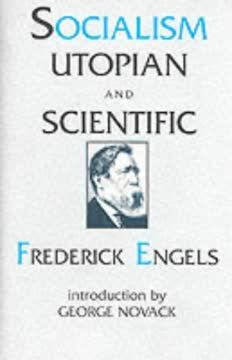

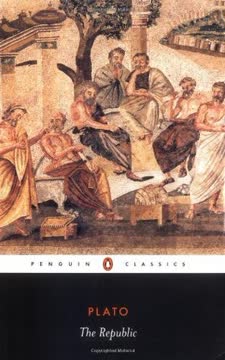
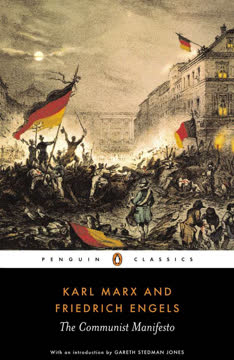




Download PDF
Download EPUB
.epub digital book format is ideal for reading ebooks on phones, tablets, and e-readers.
